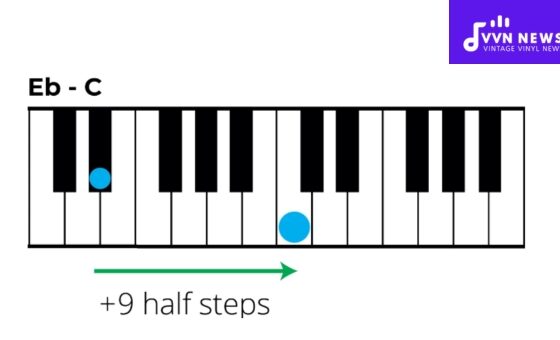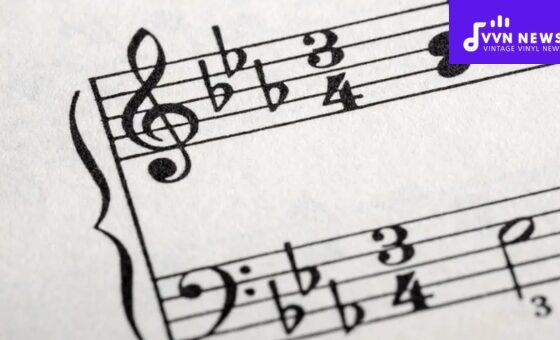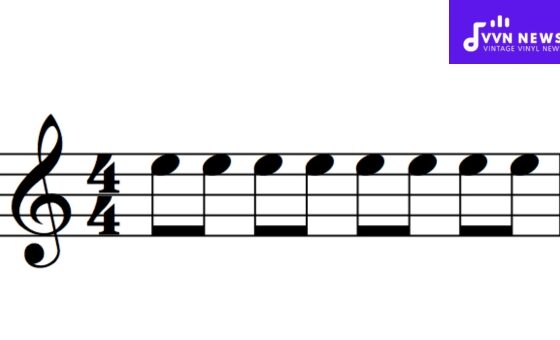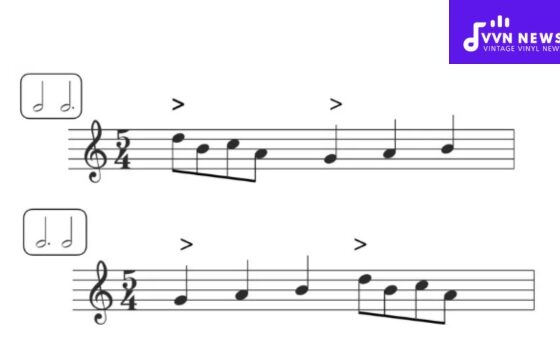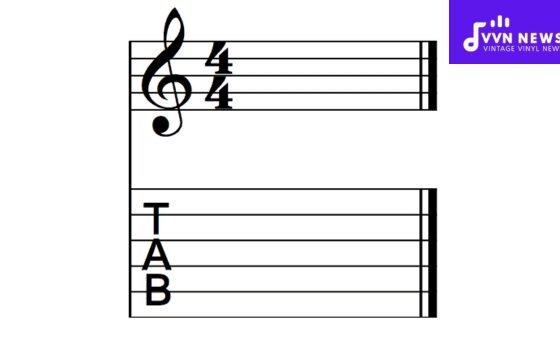Music is a universal language that speaks to the heart. Whether you are an experienced musician or a curious beginner venturing into the magical world of music, everything starts with the basics.
With that in mind, I’ve prepared a guide transposing into the alto C,” an insightful, easy-to-understand guide to help you make sense of this key musical concept.
Transposing can be a somewhat complex task, especially when dealing with different keys and instruments. By breaking it down into manageable bits, it becomes less intimidating and more intellectual fun.
The objective here is to unlock your potential by helping you transpose music effortlessly into the alto C key. Trust me, it’s easier than you might think!
What Is the Alto Clef and Why Use It?
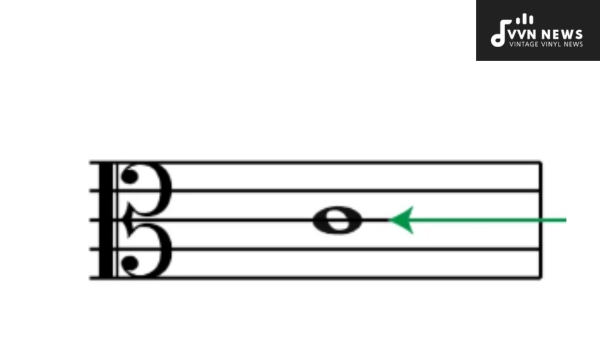
The alto clef, also known as the C clef, is one of the many musical notations used to indicate pitch in sheet music.
It is primarily utilized by instruments within an intermediate range, such as the viola. It can also be found in certain choral music and occasionally used for other instruments like the trombone or cello.
The Purpose of the Alto Clef
The alto clef is specifically designed to represent notes that fall within a specific range on the musical staff.
Its positioning on the staff makes it easier to read music that would otherwise require excessive ledger lines.
The Placement of the Alto Clef
In sheet music notation, each clef is placed on a specific line or space on the staff. For the alto clef, it is centered around a particular line: the middle line, which serves as a reference point. This is why it’s often referred to as a C clef since this middle line corresponds to C.
Also Read: Alto Flute Transposition [Guide For Successful Pitch Change]
Instruments That Use the Alto Clef
As mentioned earlier, one of the primary instruments that employs the alto clef is the viola. The viola plays in a register lower than that of the violin but higher than most other string instruments. Using the alto clef allows for efficient notation without excessive use of ledger lines.
The versatility and functionality of the alto clef make it useful beyond string instruments alone. Certain styles of choral music may utilize this clef when parts fall within an appropriate vocal range for altos or tenors.
Being able to read sheet music written in different clefs expands your horizons as a musician and opens up opportunities to play a wider range of musical compositions.
Now that we have covered the basics of the alto clef, we can move on to exploring the steps involved in transposing music into this clef.
How Does the Alto Clef Differ from Other Clefs?
When it comes to reading and transposing sheet music, the differences between clefs is essential.
In this section, we will explore how the alto clef differs from other commonly used clefs, such as the treble and bass clef.
The Positioning of the Middle C
In the alto clef, the middle line represents middle C. This differs from the treble clef, where middle C is located below the staff, and the bass clef, where it is located above.
The positioning of middle C about the staff helps determine which notes are played within a specific register.
The Number of Ledger Lines
One noticeable difference when comparing clefs is the number of ledger lines required to notate certain pitches.
the treble and bass clefs note that fall outside their respective staff ranges require numerous ledger lines.
With the alto clef’s placement on the middle line, notes within its range typically require fewer ledger lines.
Different Clef Symbols
Each clef has its unique symbol used to denote its presence on a musical staff. The alto clef symbol resembles a stylized “C”, as it centers around that particular note on its assigned line.
Register Specificity
The alto clef is often associated with transposing instruments such as viola or trombone. These instruments naturally sound differently when playing written music compared to their actual pitches—an essential distinction for musicians to be aware of if playing pieces originally written for instruments in other clefs.
Also Read: Chords In B Major [Step By Step Guide For Guitarists]
Benefits for Viola Players
The unique positioning of the alto clef benefits viola players as it allows for more ergonomic and comfortable reading while still enabling notation within their instrument’s ideal range.
It eliminates the excessive use of ledger lines found in using other traditional treble or bass clefs.
Transitioning Between Clefs
Mastering the alto clef also makes it easier to transition between other clefs. By knowing how the notes are represented and being able to switch between different clefs, musicians can navigate pieces written for various instruments effortlessly.
These differences between the alto clef and other commonly used clefs will enable you to read and transpose music more effectively.
It is a valuable skill that expands opportunities for playing different instruments and exploring a broader range of musical compositions.
What are the ways of Transposing to the Alto Clef?

Transposing music into the alto clef may seem daunting at first, but with a systematic approach, it can become more manageable.
Here are some effective methods to help you transpose your music into the alto clef:
Key Signatures and Clefs
Before diving into transposition, it’s crucial to have a solid knowledge of key signatures and how they relate to different clefs.
This knowledge will give you a foundation for transposing into any clef, including the alto clef.
Choose a Transposition Method
There are several ways to transpose music into the alto clef. One common method is interval transposition. This technique involves moving each note up or down by a specific interval (e.g., a major third).
Another method is a chromatic transposition, which involves raising or lowering each note by half-steps. Experiment with different methods to find what works best for you.
Utilize Brackets or Annotations
To make the process easier, consider using brackets or annotations on your sheet music. This technique allows you to visually see how each note has been transposed without altering the original notes’ positions on the staff.
Practice Sight Reading in Alto Clef
To become proficient in transposing to the alto clef, practice sight reading in this clef regularly. Sight-reading exercises specifically designed for alto clef will help you improve your fluency and accuracy.
Use Transposition Charts as Reference Guides
Transposition charts can be incredibly useful tools when starting with alto clef transposition.
These charts provide visual representations of how notes correspond between different clefs. You can find printable charts online or create your own for easy reference.
Start with Simple Songs and Progress Gradually
When first starting, select relatively simple songs or musical pieces to transpose into the alto clef. As you gain confidence and proficiency, gradually tackle more complex compositions.
This gradual progression will allow you to develop your transposition skills at a steady pace.
Also Read: 24 Best Metal Guitars Guide To Amps, Strings, & Pickups
Seek Guidance from a Music Teacher or Mentor
If you find yourself struggling with transposing into the alto clef, don’t hesitate to seek guidance from a music teacher or mentor.
They can provide valuable insights, personalized instruction, and constructive feedback to help you overcome any challenges.
Key signatures and clefs, choosing an appropriate transposition method, utilizing brackets or annotations, practicing sight reading in the alto clef, using transposition charts as references, starting with simple songs, and seeking guidance when needed, you’ll be well on your way to confidently transposing music into the alto clef.
Common Pitfalls to Avoid When Transposing
Transposing music can be a challenging task, especially when dealing with clefs that you’re not familiar with.
Here are some common pitfalls to avoid when transposing into the alto clef:
Neglecting Clef Signatures
One mistake many musicians make is forgetting to adjust the clef signature when transposing into the alto clef.
The alto clef has a unique positioning on the staff, so it’s crucial to ensure that all notes align correctly.
Always double-check that your clef symbol is placed accurately on the middle line of the staff.
Misidentifying Accidentals
Accidentals are musical symbols that alter the pitch of a note by raising or lowering it by a half step.
When transposing, be sure to identify and transpose any accidentals in your original piece correctly. Pay attention to sharp (#), flat (b), and natural (♮) symbols.
Overlooking Key Signatures
Another common pitfall is forgetting to transpose key signatures into the appropriate alto clef key signature.
Key signatures tell us which pitches are “altered” throughout a piece of music and are essential for maintaining consistency in transposition.
Remember that each key signature has its specific set of sharps or flats assigned to it. Be mindful of this when transposing your sheet music into the alto clef and make sure you apply any necessary changes accordingly.
Failing to Use Reference Points
When transposing, it’s essential to rely on reference points such as key signature, time signature, and intervals between notes. These elements help maintain consistency throughout your transposed piece.
By using these reference points as visual anchors, you can accurately transpose each note from the original sheet music onto its corresponding position in the new alto clef score.
Forgetting about Octave Changes
Sometimes, a note in the original piece may be out of the playable range in the alto clef. In such cases, you may need to move the note up or down an octave to ensure it falls within the appropriate range.
Always be aware of octave changes when transposing and make any necessary adjustments to ensure that your music remains playable and retains its original intention.
Also Read: 22 Best MIDI Controller Buying Guide [Choose The Right Gear]
FAQ About Transposing the alto clef
Why is the alto clef used?
The alto clef is used to notate music for instruments like the viola that have a range higher than the bass clef but lower than the treble clef.
How does the alto clef differ from other clefs?
Unlike the treble and bass clefs, which have distinct positions on the staff, the alto clef’s center line corresponds to the note C.
What are some common instruments that use the alto clef?
The primary instrument that uses the alto clef is the viola. However, it can also be found in certain choral music and occasionally used for other instruments like trombone or cello.
How can I transpose music into the alto clef?
To transpose into the alto clef, determine where the middle C is on your original sheet music and then locate the middle C on your new sheet music in the alto clef. From there, adjust each note accordingly.
What are some common pitfalls to avoid when transposing into the alto clef?
One common mistake is forgetting to account for key signature changes when transposing music into a different key or clef. It’s essential to keep track of accidentals and make adjustments as necessary.
Conclusion
Transposing music into the alto clef doesn’t have to be an overwhelming task.
By following the steps and tips outlined in this guide, you can gain confidence in reading and transposing music in the alto clef.
Remember to practice regularly and familiarize yourself with the positioning of notes on the staff.
With time and dedication, you’ll become proficient in transposing music into the alto clef, expanding your musical repertoire and skills as a musician.




